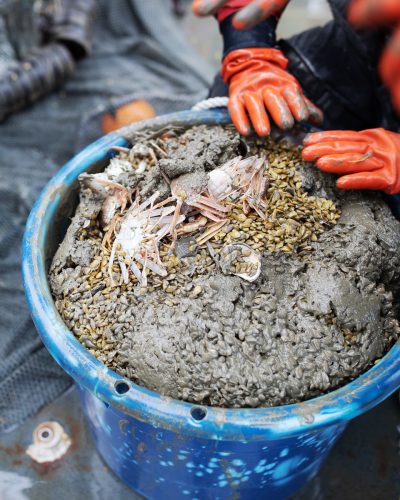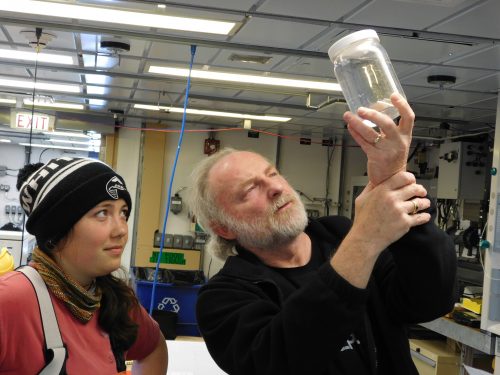Scientists document striking changes in Pacific Arctic ecosystems
February 24, 2020
Alice Bailey
907-474-5350

Pacific Arctic ecosystems are undergoing dramatic changes because of warmer ocean water, a multidisciplinary team of scientists reported today in the journal Nature Climate Change.
During an ongoing research program, team members observed conditions more typical of sub-Arctic ecosystems.
"The rate of change over the study timeframe came as a shock," said Henry Huntington, lead author of the study. "Having a team with the expertise to put together the pieces across the whole ecosystem simply drives home how far-reaching the changes are and how much they matter."
The northern Bering and Chukchi seas are among the world’s most productive ocean areas. They are home to millions of seabirds and marine mammals, and vibrant indigenous cultures. The region has also long been one of the fastest warming places on the planet.
Some key observations from the Arctic Integrated Ecosystem Research Program include:
- Near-bottom waters that typically remained close to freezing year-round have warmed for parts of each fall and winter from 2014-2018.
- Sea ice that used to start forming each fall has been absent or sparse into January or February, and the spring ice retreat was earlier than normal in recent years.
- Juvenile Arctic cod, which dominate fish communities in the surface to mid-depth waters of the northern Chukchi Sea, were substantially more abundant in 2017 than in 2012 and 2013.
- In 2017 pink salmon numbers increased dramatically in the northern Bering Sea.
- Bowhead whales, which typically migrate south of St. Lawrence Island, were observed year-round north of the Bering Strait.
- Ice seals were absent from vast portions of some of their main breeding areas, and dead seals were reported in unusually high numbers on the Bering and Chukchi coasts.
- Abundance of seabirds in offshore waters declined in 2017-2019 compared to long-term trends. There were also shifts in distribution for some key species, as well as seabird die-offs in the region.

University of Alaska Fairbanks co-author Seth Danielson described the changes as a wake-up call.
“Oftentimes, when significant ecological reorganizations take place, we are only able to try to piece the story together after the fact," he said. "In this instance, we had the unusual opportunity to be cognizant of change as it was happening so we could purposefully document the process as it unfolded.”
Collaborative research efforts like this allow scientists to monitor changes as they are happening and to provide information for communities and resource managers so they can respond and adapt.
The big question for scientists remains whether these changes reflect a new norm.
“What this means for the region’s human and other inhabitants remains to be seen, especially when industrial shipping and other activities are also increasing. What happens in the northern Bering and Chukchi seas may be a foretaste of what can be expected elsewhere in the world’s oceans in the coming years and decades,” Huntington said.
The North Pacific Research Board, in cooperation with other organizations, funded the Arctic Integrated Ecosystem Research Program. It sought to better understand the mechanisms and processes that structure the ecosystem and influence the distribution, life history and interactions of biological communities in the Chukchi Sea. Previous integrated ecosystem programs were undertaken in the Bering Sea and Gulf of Alaska.

The study's authors are physical and biological oceanographers, ichthyologists, ornithologists, marine mammalogists, marine ecologists and social scientists. The researchers are from UAF, the University of Washington, the National Oceanic and Atmospheric Administration, the Alaska Department of Fish and Game, the North Slope Borough Department of Wildlife Management, the North Pacific Research Board, Stantec, the U.S. Fish and Wildlife Service and Huntington Consulting.
The board's funding partners included the U.S. Bureau of Ocean Energy Management, the Collaborative Alaskan Arctic Studies Program (formerly the North Slope Borough/Shell Baseline Studies Program), and the Office of Naval Research Marine Mammals and Biology Program. Additional support was provided by NOAA's Alaska Fisheries Science Center and Pacific Marine Environmental Laboratory, UAF, the U.S. Fish and Wildlife Service, the National Science Foundation, the National Oceanographic Partnership Program, and Shell Exploration and Production.


